
6 minute read
PROJECT PROFILE
PROJECT PROFILE
DISCOVERING
ARTHUR’S STONE
Tour guide volunteers enabled visitors to see archaeology in action at Arthur’s Stone, one of our most significant Stone Age monuments. Clark Beken, communications volunteer, tells us more. ►

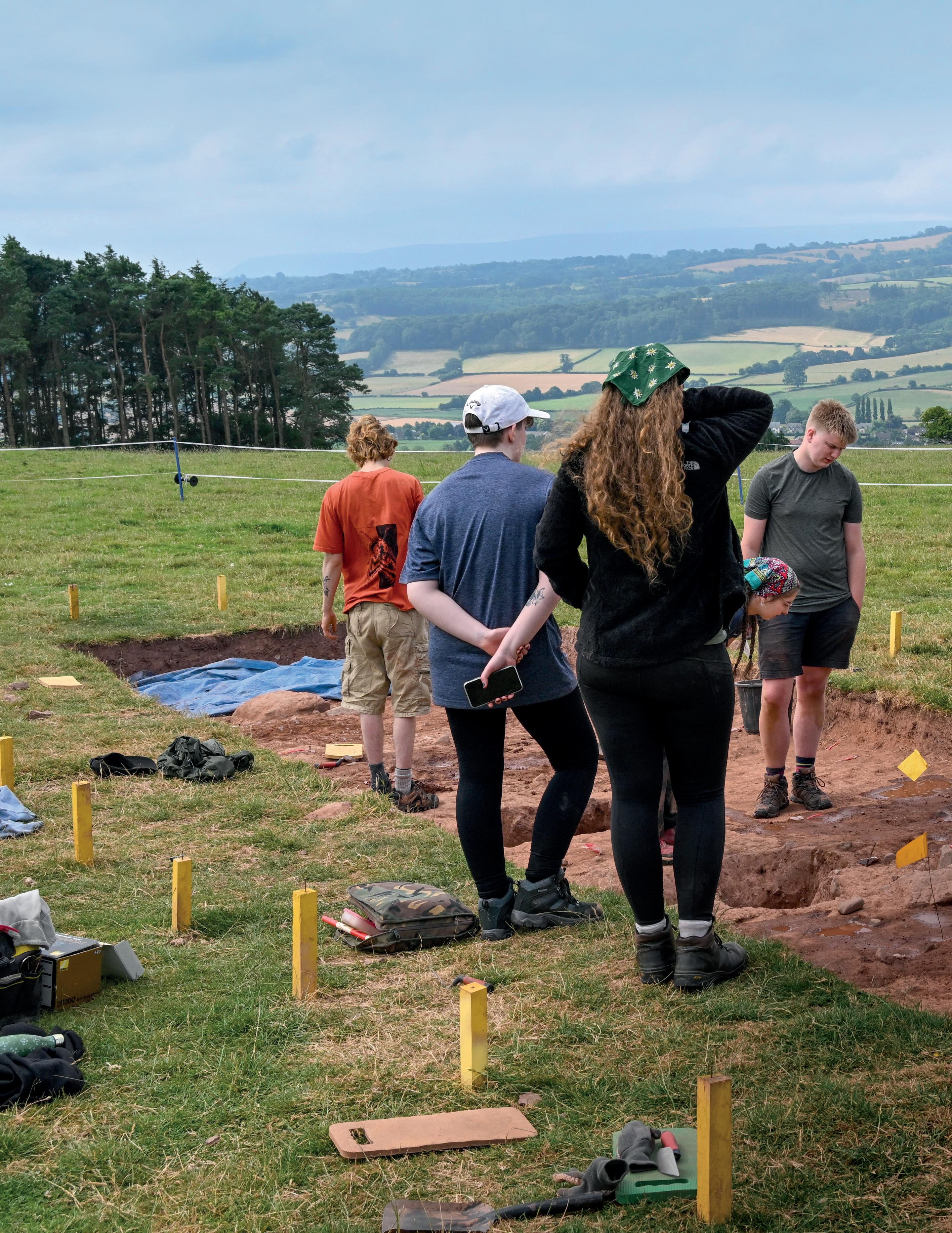
These tombs were amongst the first megalithic structures in Britain, over a thousand years older than the great sarsen circle at Stonehenge, and Arthur’s Stone is one of the most impressive
Win Scutt, properties curator, west
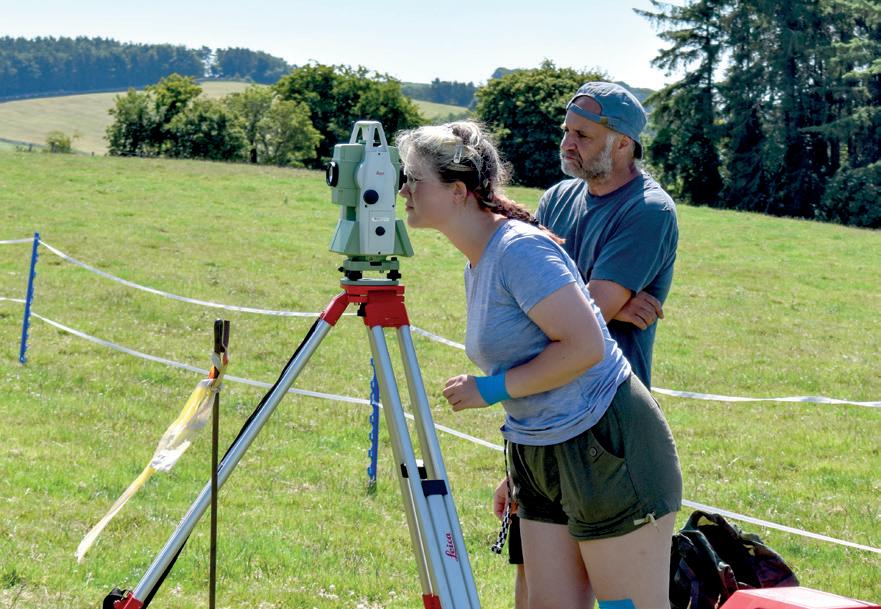
Arthur’s Stone in Dorstone, Herefordshire, is a Neolithic burial chamber situated on a hill overlooking the Golden Valley and the Wye Valley. The chamber consists of nine upright stones topped by a large capstone, possibly weighing 25 tonnes. The first chamber was probably erected in the 38th century BCE, early in the Neolithic (4000– 2400 BCE) or ‘New Stone Age’, when farming began in Britain. Subsequently a cairn of stones, contained within a drystone wall, was built around it, and at least one other burial chamber was inserted.
Fact or fiction? According to legend, it was here that Arthur killed a giant, who left the imprint of his elbow upon the stones as he fell. More recently, it’s known that author CS Lewis was inspired by the area when creating his fictional world of Narnia, and that Arthur’s Stone was the inspiration for the stone table where Aslan the lion was sacrificed in The Lion, the Witch and the Wardrobe.
Why excavate? This year, permission was granted for an archaeological excavation at Arthur’s Stone. It was part of a joint project between English Heritage and the Universities of Manchester and Cardiff. Professors Julian Thomas and Keith Ray led the project. Professor Thomas said of the excavation that it ‘seeks to restore Arthur’s Stone to its rightful place in the story of Neolithic Britain’.
The latest excavations were intended to uncover the phases of the monument’s construction, giving a new insight into tomb builders and helping us to further understand the complex changes in the monument’s design.
As part of the project, English Heritage was keen for visitors to see the dig in progress and learn about the site. Twelve tour guide volunteers were recruited and trained, as well as photography volunteers, who captured the project as it progressed. Here they discuss their experiences. ►
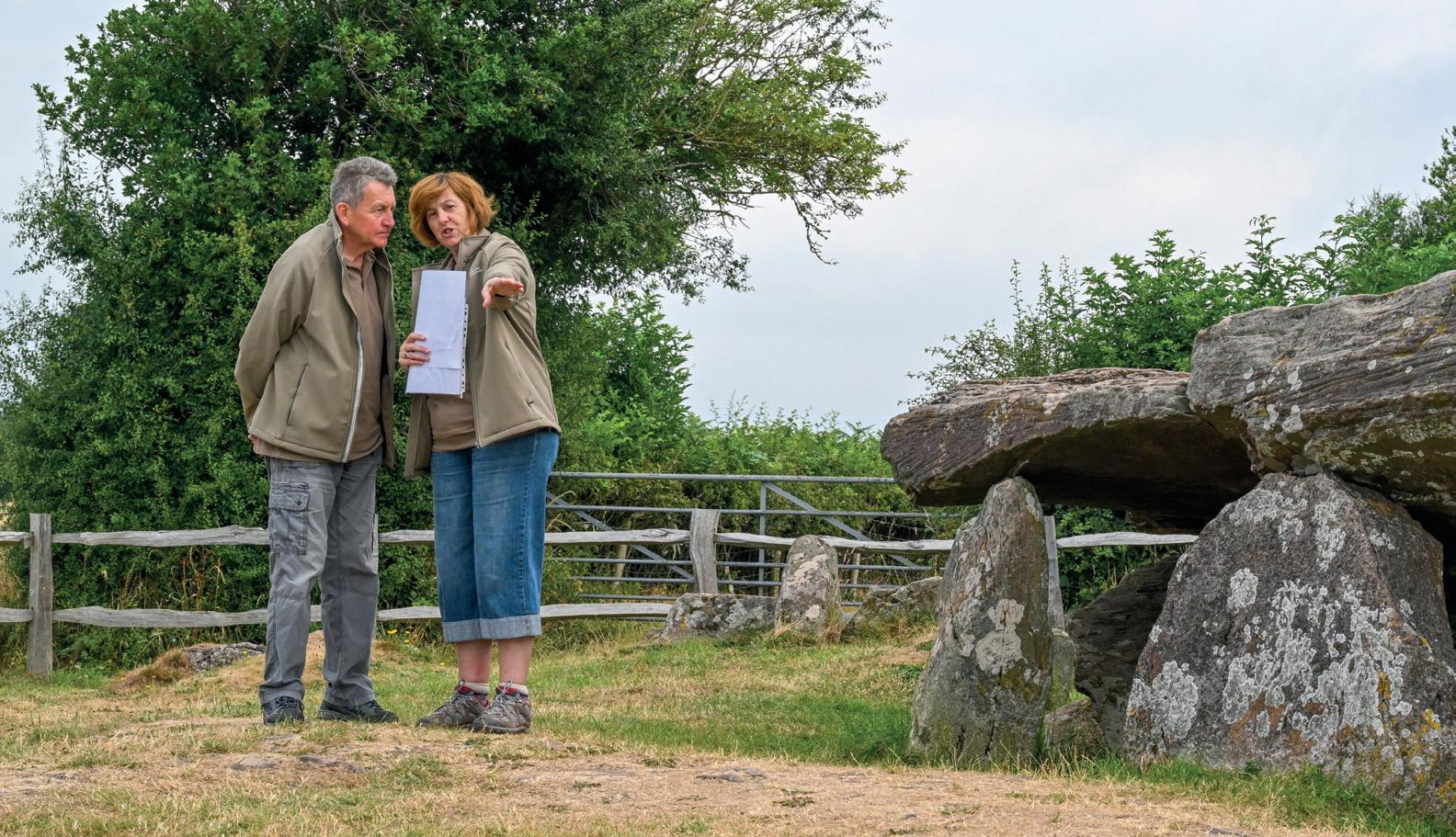
1 2
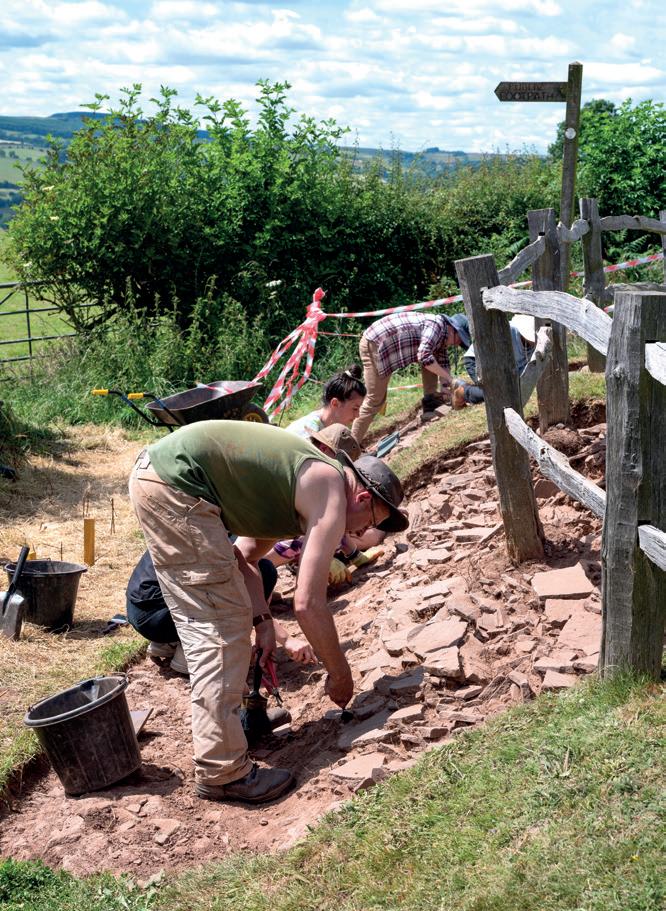
I have always been passionate about history and was already involved with my local heritage group. I’d met Professor Keith Ray previously when visiting archaeological digs in the Dorstone area. When a call came asking if I wanted to get involved, I jumped at the chance. After the initial induction, we were given background information on local Neolithic history and the all-important rota.
When I led a tour, I first explained what is meant by Neolithic, the significance of Arthur’s Stone and the importance of the dig. I learnt so much from the archaeologists and loved being able to impart their knowledge to the visitors, whilst allowing the diggers to get on with their work. The visitors had lots of great questions and kept me on my toes discussing different aspects of the history and the importance of the site. On the final Sunday, we had a big open day, which was really well attended and rounded off the project very successfully.
I really valued the experience and, like other volunteers, I am continuing to help monitor the site. Ironically, because the site is even busier now, our help is even more important. I’ve learnt a lot about Neolithic history and I’d be happy to be involved again. Ian Stead, excavation tour guide volunteer I was familiar with the site, as I’d been a photography volunteer before the project began. I’ve been a keen amateur photographer for many years, and since retirement getting involved with English Heritage has combined my hobby with doing something both interesting and useful. It’s really important to me to have a structured interest in retirement – I’d recommend it to anyone – so when the opportunity arose to join as a volunteer I was keen to sign up. I visited Arthur’s Stone four times over the course of the project to familiarise myself with the work, follow tours and take photos. I also took the opportunity to chat with the guides and archaeologists to learn more about the ongoing work and history of the site. The Neolithic archaeology of the place is amazing and I learned a lot – including how much there is that we don’t know.
One conversation with an archaeologist that made me appreciate the extent of their knowledge was when we were looking at a bone fragment. She instantly knew it was part of a human skull.
I really enjoyed my time on the project and I continue to volunteer as a site photographer at other local sites. The photos I take contribute to English Heritage’s collection of images for promoting its work. Andrew Knowles, photography volunteer
I live close to the site, so it had always interested me, but it was seeing an advert for tour guide volunteers that prompted me to sign up. We were given an informative talk by the project lead professors. Most of us already had a superficial knowledge of ancient history that proved useful.
Every day when we arrived on site, I chatted with the archaeology team to learn the latest new discoveries. This was fascinating, and important, for keeping the tours up to date. After organising the visitors, I usually made a point of getting one of the archaeologists to talk to them and answer questions. Some visitors knew a lot; some knew a little but were keen to learn more. The archaeologists were always friendly and happy to help.
I enjoyed explaining things to the visitors and as a group we became slightly obsessed with keeping up to date with the latest discoveries. Jude Cooper, volunteer manager
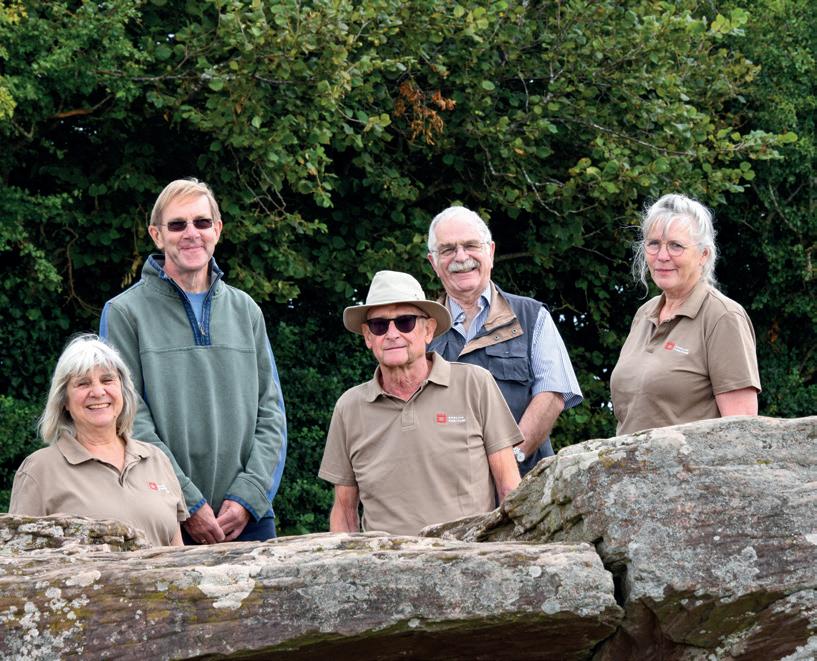
3 5

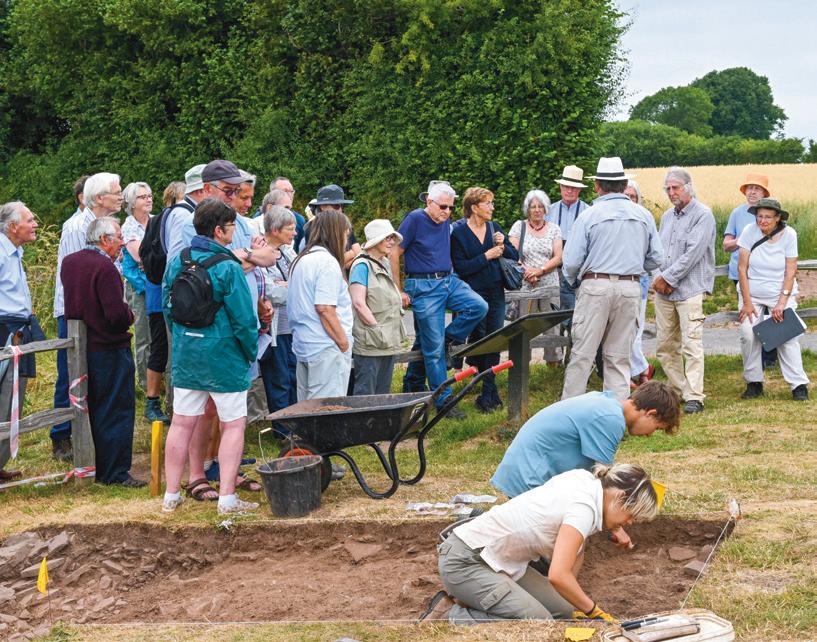
The Neolithic archaeology of the place is amazing
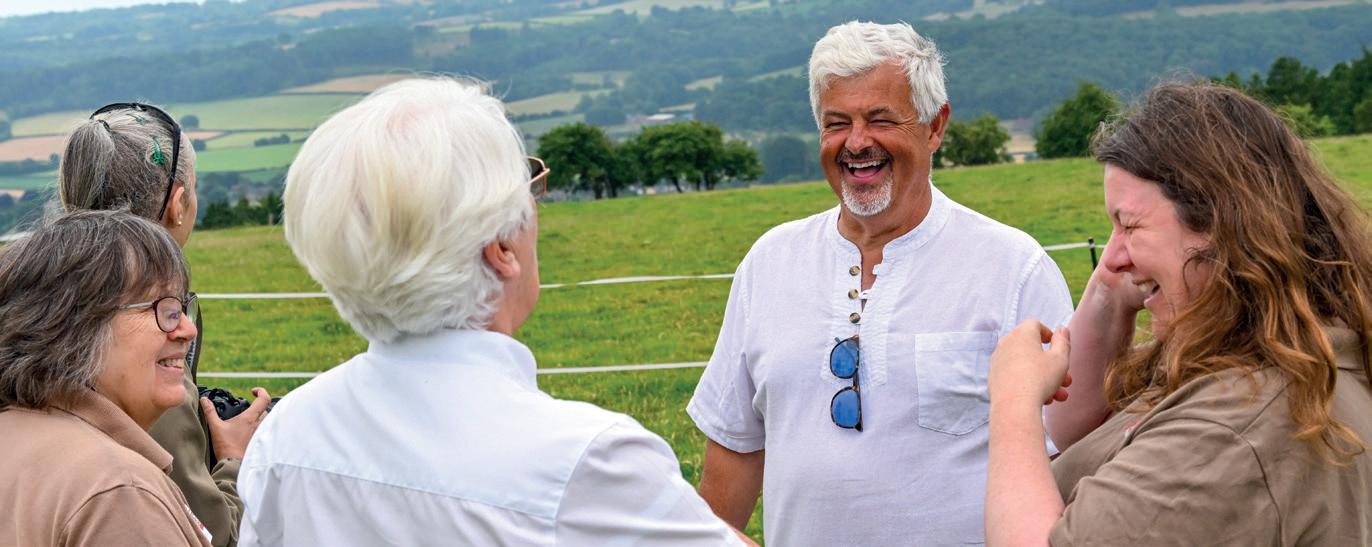
We wanted to make sure the volunteer guides played a key role when opening up this nationally important site to visitors. The team have been brilliant advocates for English Heritage and I am delighted that we have a legacy of regular volunteering, with some members staying on to monitor the site as it recovers from the excavation. Ginny Slade, volunteer manager 4
Images Page 20–21 Main image Students from the University of Manchester at the site Smaller image A student uses the Total Station to survey the site
These pages 1. University of Manchester professor Julian Thomas, with students 2. Volunteers Paul Nickholds and Lucy Zammit 3. University of Manchester students 4. (L-R) Volunteers McHale Morris, Jenny Edwards and Wendy Pitchford with Win Scutt and volunteer manager Ginny Slade 5. (L-R) Volunteers Jude Cooper, Andrew Knowles, Ian Stead, Jake Bharier and Pam Thom-Rowe 6. Visitors learn about the site
PLAN YOUR VISIT Arthur’s Stone is a free-to-enter site. For more information visit www.english-heritage.org.uk/visit/places/arthurs-stone 6
The volunteers delivered their tours to over one thousand visitors and were well received by all including Kate Mavor.
‘My guide, Ian, was excellent and I thought he really enhanced the visitor experience. Ian told me how thrilled and honoured he felt to have been asked to be a tour guide. All this is part of how we will encourage people to feel warm towards English Heritage and contribute their energy and great local ideas. Thank you to everyone involved.’ Kate Mavor, chief executive
WHAT’S NEXT?
With ever-more exciting evidence emerging, it’s clear this area was an ancient ceremonial landscape similar to Stonehenge. The team are eager to continue the dig when they return next summer, and when they do, the English Heritage volunteers will be ready to help. ■










